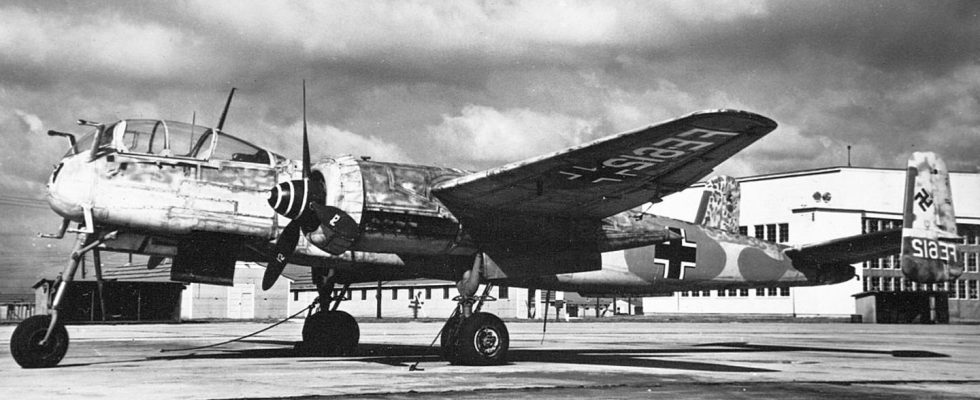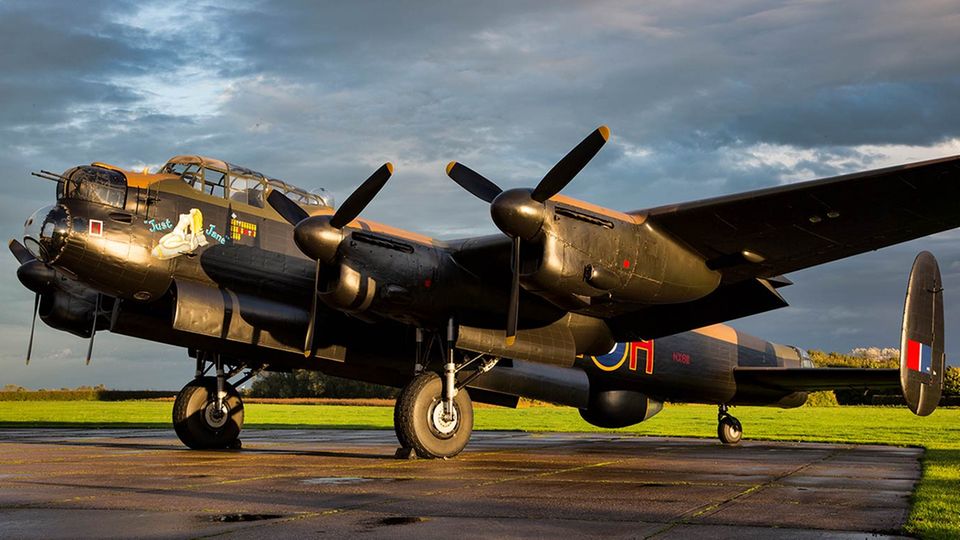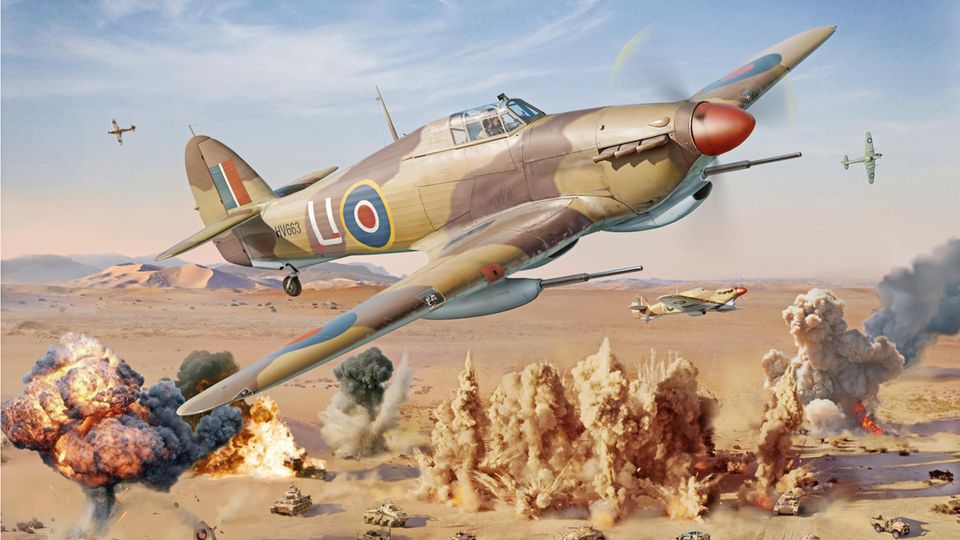Second World War
Heinkel He 219 – this is how the Uhu hunted the British bombers at night
The Heinkel He 219 is considered an ingenious design, but it also had weaknesses.
© Commons
The eagle owl went hunting with its own radar and six heavy machine guns. The aircraft had outstanding features, it had the first ejection seats. But the Reich Aviation Ministry did not appreciate them and so only a few night fighters were built.
A “house without a roof” is how Adolf Galland – general of the fighter pilots – described the hopeless task of protecting the Reich from the streams of Allied bombers. Nevertheless, life was not easy for the Allied crews. After the devastating losses in the attack on Schweinfurt, the Allies avoided daylight raids without fighter protection. From then on, the German fighters met escort fighters who swarmed around the streams of bombers. It’s different at night – here the bombers continue to follow alone. She protected the darkness. Although radar made it possible to roughly locate them, it was not easy to get an aircraft into a launch position.
Designed for night hunting
Especially since at the beginning of the war airplanes were not actually built for night operations. First, the Germans converted twin-engine machines for night hunting. Mostly the Messerschmitt Bf 110 Destroyer heavy fighter aircraft, which was not up to its intended task. The Uhu – the Heinkel He 219 – was developed specifically for night hunting and brought with it numerous improvements. The first flight was on November 6, 1942, and the twin-engine aircraft was introduced in 1943. Automatic ejection seats were installed in the Uhu for the first time. Earlier versions of the Me-110 had already introduced a special arrangement of the on-board weapons.
Strong armament
Normally, a fighter’s machine guns were mounted so that they aimed parallel to the longitudinal axis of the aircraft. The pilot always shot in the direction of travel. When hunting at night, however, they were mounted in such a way that the trajectory of their projectiles aimed diagonally upwards. The so-called “weird music” allowed the fighter to sit in a lower position behind a bomber. The fighter thus evaded the rear gunner and was able to fire at the bomber’s belly. The eagle owl went one step further. The weapons were installed two meters behind the pilot. This meant that for the first time the crew was no longer blinded by the muzzle flash. Like other German Wehrmacht aircraft, the Uhu was delivered with a variety of weapon configurations. Typically there are two MG 151s – a machine gun with a caliber of 20 millimeters – in the wing approaches, in the floor pan and diagonally behind the pilot. The weapons in the hull were partially replaced by the more powerful 30 mm MK 108 or MK 103 cannons. In particular, a sheaf of 30 mm cannons could destroy any bomber. The Lichtenstein radar was located in the nose of the machine. The aircraft was able to find a target independently and was not solely dependent on the instructions from the control center on the ground. Added to this was the duration of use. The eagle owl could lurk in the air for four to five hours until a target was assigned to it.
First use
The first use of an eagle owl is well documented. On June 11, 1943, the pilots of the first group of Night Fighter Squadron 1 took off in Venlo with the new aircraft for the first time. The first Heinkel was flown by Major Werner Streib, the radio operator, Sergeant Fischer, operated the radar. He brought the Heinkel into the firing position. The six MG 151s with a caliber of 20 millimeters tore apart the first bomber. In total, Streib shot down five British planes before the ammunition ran out. The German eagle owl was also hit and broke apart upon landing.
A total of 280 He 219 aircraft were built between 1943 and 1945. She was an unloved child. It was optimized for only one purpose – intercepting heavy bombers at night. So different from the Junkers Ju-88 with its wide range of uses, which was also used for night hunting. Erhard Milch, the field marshal responsible for German aircraft production, generally didn’t think much of such specialized aircraft. The Reich Aviation Ministry repeatedly took the Uhu out of production until its supporters secretly cheated it back in. The tensions between Milch and Ernst Heinkel were also not very helpful.
Too heavy or too weak
The technical features and its beauty secured the He 219 a large number of admirers. Fans who overlooked a cardinal problem with the draft. The machine was underpowered, the engines were too weak or the construction was too heavy. Eric Brown flew several pieces of loot as a test pilot for the Royal Navy after the war. He judged that the Heinkel “possessed the worst characteristic a twin-engine aircraft can have – it was underpowered. This flaw makes takeoff in the event of an engine failure a dangerous maneuver, and a landing with a failed engine could be just as critical.”
As the war progressed, keeping the complex He-219 operational became more and more problematic. One Uhu pilot wrote: “It was rare for more than ten aircraft to take off on a night mission, usually fewer, and of those half either returned immediately after takeoff or had to land within the next half hour due to malfunctions or problems .” In most cases it was the onboard electrical system that failed. The machines were parked outdoors and condensation quickly formed in them.





